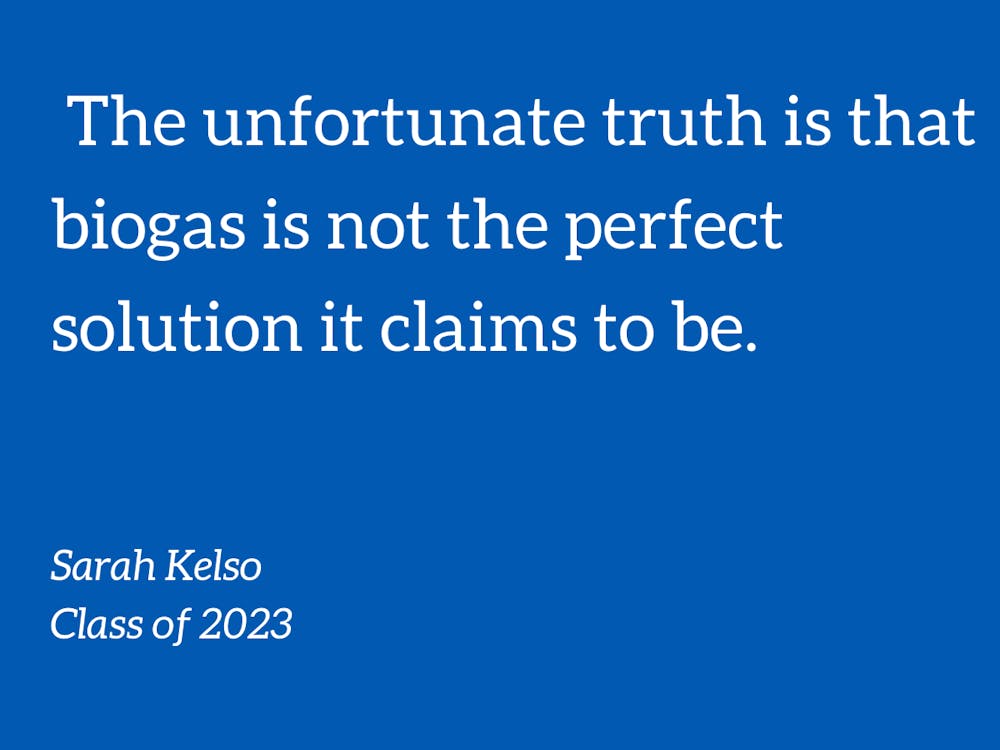A few months ago, Duke announced its partnership with GreenGasUSA, a South Carolina-based biogas provider. For a long time, biogas has been a part of Duke’s plan to reach carbon neutrality by 2024. Duke anticipates biogas will be provided to campus beginning in early 2022. This quick turnaround time is important for Duke to meet its 2024 deadline. But does it also mean there are corners being cut in the process?
Biogas is created when methane is collected from vegetable or animal waste pools—something North Carolina residents are quite familiar with. This Duke Today article describes the process of methane collection and how it will be used on campus. New Executive Vice President, Daniel Ennis, voices his full support for the project in the same article.
This all sounds pretty good right? Duke reaches carbon neutrality and methane is diverted from going directly into the atmosphere.
The unfortunate truth is that biogas is not the perfect solution it claims to be. While trapping methane is beneficial, the giant lakes of rotting waste are still left in the backyards of low-income communities and communities of color.
There are proper ways to collect methane for biogas and clean up the waste pools at the same time. So, this begs the question:
Is GreenGasUSA taking those extra steps to clean up waste and care for the health of their communities?
Their website doesn’t help us answer this question. Hopefully Duke faculty involved in forming this agreement know the answer and would be willing to share.
It is clear the company values the partnership with Duke and wants to capitalize on it. The first thing you see on their website is that they are “Proud to announce our partnership with Duke University."
If the answer to our question is no, Duke needs to use its position and delay the contract until GreenGasUSA changes its methods.
Sarah Kelso is a Trinity junior.
Get The Chronicle straight to your inbox
Sign up for our weekly newsletter. Cancel at any time.

